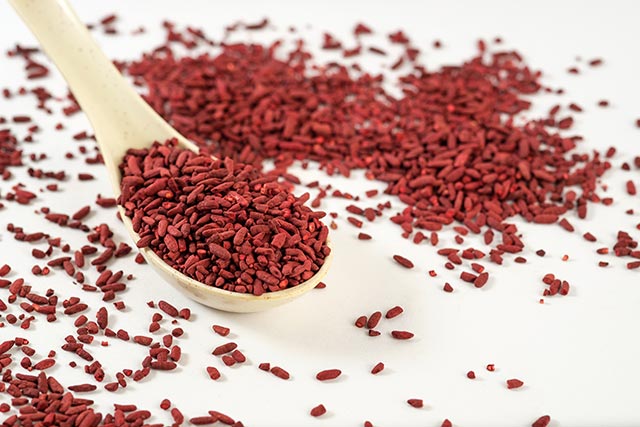Red yeast rice improves endothelial function by reducing inflammation, alleviating oxidative stress
06/10/2019 // Michelle Simmons // Views
Tags: alternative medicine, alternative therapies, alternative treatment, atherosclerosis, cardiovascular disease, disease prevention, endothelial function, food as medicine, food is medicine, food science, foodcures, functional food, goodfood, goodmedicine, goodscience, healing, healing foods, heart disease, inflammation, natural cures, natural medicine, natural treatment, oxidative stress, red yeast rice, remedies, research, superfoods, therapies

- ASCVD is one of the deadliest diseases in the world, wherein endothelial injury continues throughout the course of the disease.
- Improvement in endothelial function is essential in the prevention of ASCVD.
- Red yeast rice is a healthy traditional Chinese food made by fermenting the fungus Monascus purpureus on wet rice.
- Studies have shown that red yeast rice and its products help in the treatment of cardiovascular diseases because of their effectiveness and safety in improving lipid levels.
- Red yeast rice also helps in the treatment and prevention of cardiovascular disease by reducing oxidative stress and inflammation, as well as increasing nitric oxide (NO), which maintains normal vasodilatory function and helps prevent platelet aggregation and adhesion.
- These beneficial effects may be attributed to its compounds: polyketides, monounsaturated fatty acids, phytosterols, isoflavones, condensed tannins, Coenzyme Q10, microelements, and pigments, including ankaflavin, monascin, rubropunctatin, monascorubrin, rubropunctamine, and monascorubramine.
In sum, these results suggested that red yeast rice and its products can be used as a healthy functional food for preventing and treating cardiovascular diseases.
Read the full text of the study at this link.
For more studies on heart-healthy foods like red yeast rice, visit FoodCures.news.
Journal Reference:
Feng SJ, Tang ZH, Wang Y, Tang XY, Li TH, Tang W, Kuang ZM. POTENTIAL PROTECTIVE EFFECTS OF RED YEAST RICE IN ENDOTHELIAL FUNCTION AGAINST ATHEROSCLEROTIC CARDIOVASCULAR DISEASE. Chinese Journal of Natural Medicines. January 2019; 17(1): 50-58. DOI: 10.1016/S1875-5364(19)30009-3
Related Topics
alternative medicine alternative therapies alternative treatment atherosclerosis cardiovascular disease disease prevention endothelial function food as medicine food is medicine food science foodcures functional food goodfood goodmedicine goodscience healing healing foods heart disease inflammation natural cures natural medicine natural treatment oxidative stress red yeast rice remedies research superfoods therapiesLatest News
Related News
11/21/2023 / By Arsenio Toledo
11/21/2023 / By Evangelyn Rodriguez
11/21/2023 / By Zoey Sky
11/20/2023 / By Arsenio Toledo
11/17/2023 / By Zoey Sky
11/15/2023 / By Kevin Hughes
Take Action:
Support Natural News by linking to this article from your website.
Permalink to this article:
Copy
Embed article link:
Copy
Reprinting this article:
Non-commercial use is permitted with credit to NaturalNews.com (including a clickable link).
Please contact us for more information.
Please contact us for more information.






















